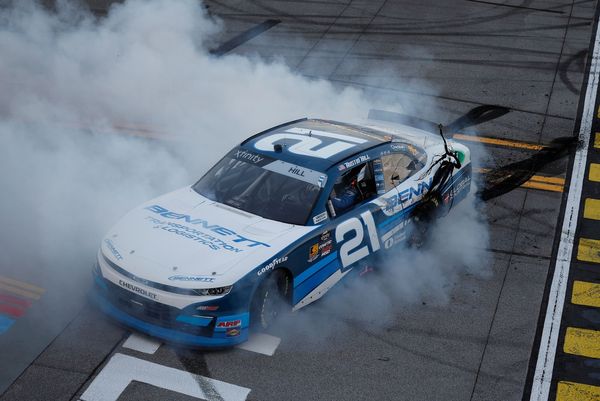Buying a home isn't easy these days. But there's a way buyers can get a short-term break from the highest mortgage rates in two decades: a mortgage rate buy-down.
This mortgage maneuver can help you when buying a home and potentially save hundreds — or even thousands — of dollars in interest. And that's critical now. High prices and low inventory hurt affordability. And mortgage sticker shock is also to blame for scaring people from buying a home.
Rates on 30-year fixed home loans are above 7%. That's double what they were at the start of 2022.
What's A Mortgage Rate Buy-Down?
A rate buy-down offers borrowers a lower interest rate for a specified period (typically one to three years) at the start of a mortgage. To incentivize cash-strapped buyers and help close deals in a cooling market, a homebuilder, property seller or lender makes an upfront cash deposit to cover the interest the buyer saves with the temporary rate reduction.
"They use it as a carrot to get people in the house," said Jennifer Beeston, senior vice president of mortgage lending at Guaranteed Rate, which introduced its "Rate Reduce" program late last year.
How A Mortgage Buy-Down Works When Buying A Home
The most common scenario is a 2-1 buy-down. The builder or seller (not the homebuyer) pays to cut the buyer's mortgage rate by 2 percentage points below market rate for the first year of the loan and by one percentage point in the second year. Starting in year three, the mortgage, which comes with a fixed rate, resets at the higher initial rate for the remainder of the loan.
"Let's say the market rate now is 7%," Beeston explained. "The first year you have the mortgage your rate would be 5%. The second year it would be 6%. And then in year three and moving forward it would be 7%."
It's important to note that lenders qualify homebuyers based on their ability to afford the mortgage at the higher rate.
Buying A Home Bonanza?
The upside to the buy-down? The buyer's monthly mortgage payment is lower during the buy-down period.
Other popular options include a 1-0 buy-down in which you get a single point reduction in year one.
In a 3-2-1 buy-down the buyer gets a reduced rate in the first three years of the mortgage. So, if the market rate is 7%, in year one the rate will be 4%, in year two it will be 5%, in year three it will be 6%. And after that the rate will go back to 7%.
"If you can get a seller to buy down your rate, it can save you some really big bucks," said Clare Trapasso, executive news editor at Realtor.com.
Buy-Downs More Popular For Buying A Home
Rate buy-downs are making a comeback amid a rate spike that has made it harder to sell a home in some parts of the country. "There was none of this (buy-downs) in 2020 and 2021 (when the housing market was hot)," said Beeston. Buyers now have a better chance of getting concessions from sellers.
Many mortgage lenders are marketing this product. Rocket Mortgage, for example, is promoting its "Inflation Buster" program which shaves a full percentage point off the first year of the mortgage.
Similarly, Beeston says many real estate agents tout rate buy-downs in MLS listings. And 30% of homebuilders said they're temporarily reducing the rate for the first two years of the mortgage, according to a survey by John Burns Research & Consulting.
How A Mortgage Buy-Down Saves Homebuyers Money
Let's say you're buying a home for the average nationwide price of $516,500. And you put 20% down. Your mortgage is $413,200.
Imagine your homebuilder offers you a 2-1 buy-down and charges you the current national 30-year fixed rate of 7.21%, according to Bankrate.com. In this offer, the mortgage rate you'll pay will be 2 percentage points lower in year one of the loan and 1 percentage point lower in year two.
In year one, you'll pay a rate of 5.21% and your monthly principal and interest payment will be $2,271, or $537 less than the market rate of $2,808. The yearly savings: $6,444.
In year two, you'll pay a 6.21% rate and your monthly principal and interest will be $2,533, or $275 less per month. The annual savings: $3,300.
In year three, your rate would go back to 7.21% and your payment would reset at $2,808.
So, your total savings for the 2-1 buy-down is $9,744. The savings, which is prepaid interest paid by the seller, are placed in an escrow account, and used to supplement the buyer's loan payment during the buy-down.
How Buy-Downs Are Unique When Buying A Home
A rate buy-down is different from reducing your rate permanently by paying discount points. Typically, the rate reduction you get after paying points is much smaller than the discount you get in a rate buy-down. For example, paying one point (or 1% of the loan amount) typically reduces the rate by just a quarter of a percentage point.
Rate buy-downs are also different from an adjustable-rate mortgage (ARM). With an ARM, you also pay a lower rate early in the loan term. But the ARM's early fixed rate lasts a specified number of years and then resets to an adjustable rate. That means there's a risk rates on the ARM could move higher and make the loan more expensive. In contrast, the rate on a buy-down loan is fixed.
How Buy-Downs Help Buyers And Sellers
An interest rate buy-down is often a win-win for buyers and sellers. Buyers save money on interest, and homebuilders and sellers avoid having to slash their ask price. Buy-downs are most popular with new construction homes. Builders are reluctant to make price concessions for one buyer because it could force them to do so for other people purchasing a home in the new development.
"If you're a builder, the last thing you want to do is lower the price," said Trapasso.
Mortgage Buy-Down Caveats When Buying A Home
Despite cost savings, there are potential downsides homebuyers should consider, adds Trapasso.
For one, the lower rate won't last forever. Don't get too accustomed to the lower payment and spend the money you're saving. That could cause a shock and bust your budget later.
"You just have to make sure you can afford the higher payment on the loan when it reverts back to the market rate," said Trapasso.
Homebuyers should also shop around for the lowest rates. The reason: Getting a 2-1 buy-down mortgage at a rate of 7% might not be such a good deal if you can get a better rate in the market, such as 6%.
Because of these potential pitfalls, Beeston says you're better off asking a builder or seller to pay your closing costs first, and then go for the rate buy-down second. The reason: If the closing costs are, say, $10,000, you don't have to yank that amount out of your checkbook. The best-case scenario is to get both concessions, says Beeston.
Don't Forget Refinancing
Homebuyers who opt for a rate buy-down must also look to refinance to a lower rate if the opportunity arises. Let's say you do a 2-1 buy-down with the market rate at 7%. If rates eventually fall, you could refinance and lock in a lower rate for the life of the loan. If you refinance before the rate buy-down ends, any money left in the escrow account will be applied to the new loan.
But keep in mind, there's no guarantee that rates will fall. So, make sure you can afford the bigger payments after the buy-down period ends.







